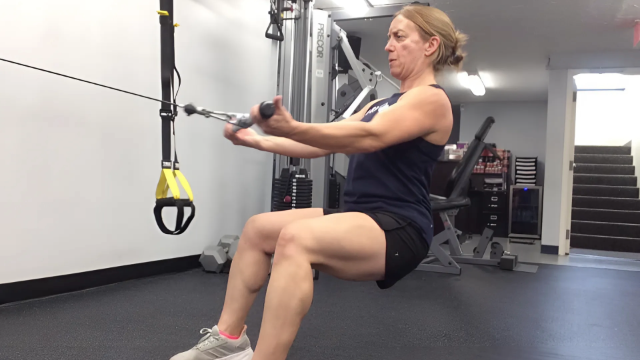
Connecticut
From as young as five, I was on the go. Gymnastics, tennis, soccer, basketball, swimming, softball—you name it, I was likely playing it. Each sport brought its own demand on my body, which I felt with each dive, sprint, or stretch. By 14, I was a catcher for a competitive softball team, pushing my body to its limits. Then came the pain—an intense, radiating ache down my legs that left me terrified. At that age, fear was my first response; I didn't yet understand if I would walk pain-free again or what was even causing this discomfort.
That was when my mother’s chiropractor came into my life, someone who used kinesiology, or muscle testing, to pinpoint the root cause of my pain. After a few targeted adjustments, I was pain-free, and I was fascinated. The mechanics of how the body works, how muscles and nerves interact, became an obsession. I sketched the human body constantly, every muscle and bone, even studying a life-sized skeleton my parents gifted me to learn every inch of it. In college, I pursued sports medicine and athletic training, bringing my passion for anatomy to life. I was captivated during kinesiology classes where our professor broke down the biomechanics of athletes, challenging us to name the muscles that powered each movement. Having drawn these muscles for years, I could make connections quickly. As an intern with the college’s women’s basketball team, I applied my understanding of muscle function to help athletes correct imbalances, reduce pain, and prevent injuries. This was where it all truly began.
I’d always felt drawn to becoming a sports chiropractor. My first glimpse into this world was during an eighth-grade career day, shadowing a chiropractor and watching him work with patients who came in worn down by pain, frustration, and often desperation. I remember thinking, “This is it; this is what I’m meant to do.”
Back in the early 1990s, though, sports medicine wasn’t the path it is today. Options were limited. Few colleges offered sports medicine as a major, but I was determined. I aimed for a four-year degree in sports medicine/athletic training, with plans to attend Palmer College of Chiropractic for graduate school. Palmer was the gold standard, the top institution in chiropractic medicine, and it’s where my chiropractor had studied. I wanted to follow in his footsteps, perhaps even exceed his impact.
After graduating, I received the Clinical Excellence Award, given to only five students in our clinic system, which affirmed the path I had chosen. Now, 24 years into my career, with certifications like Functional Movement Specialist (FMS) and features in various media, I feel I’ve come full circle.
Much of my inspiration stems from watching my mom seek healing. She dealt with chronic fatigue, severe depression, food allergies, and Raynaud’s—an autoimmune condition affecting blood flow. She went to acupuncturists and chiropractors and, through chiropractic adjustments, began to feel relief. Her systems aligned, her energy improved, and I witnessed her transformation firsthand. That shift ignited my curiosity about holistic healing, opening me up to the world of natural medicine and the possibility that the body can heal from within.
To anyone reading this, if you’re in pain and wonder if there’s another way, if you’re longing to get back to the activities you love—be it running, tennis, golf, or simply playing with your children or grandchildren—I invite you to reach out. Let’s explore what’s possible. I offer a free 30-minute video consultation to help identify what’s missing and put together an action plan to get you back to feeling your best.
Share Your Thoughts About the Story You've Just Read